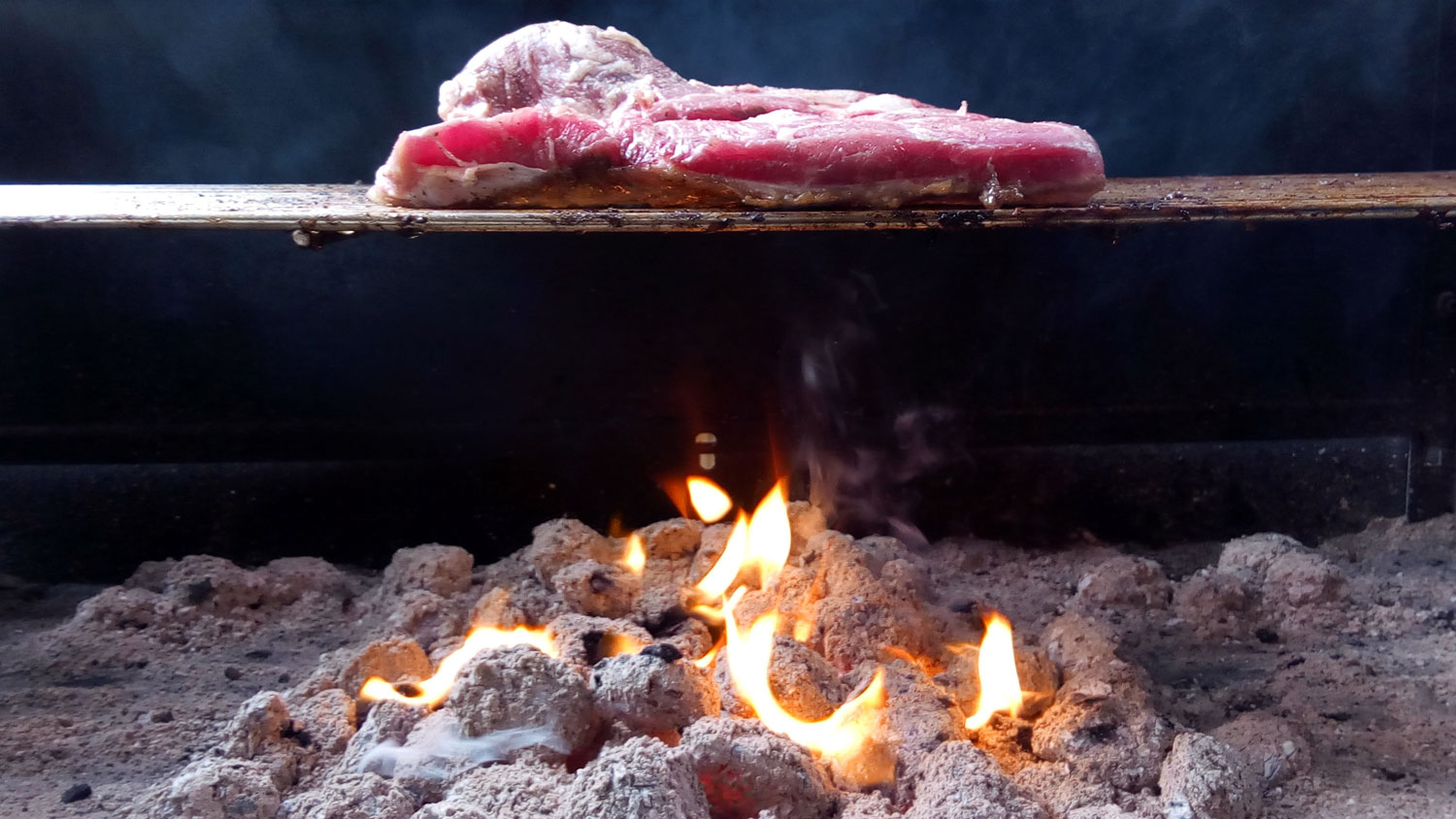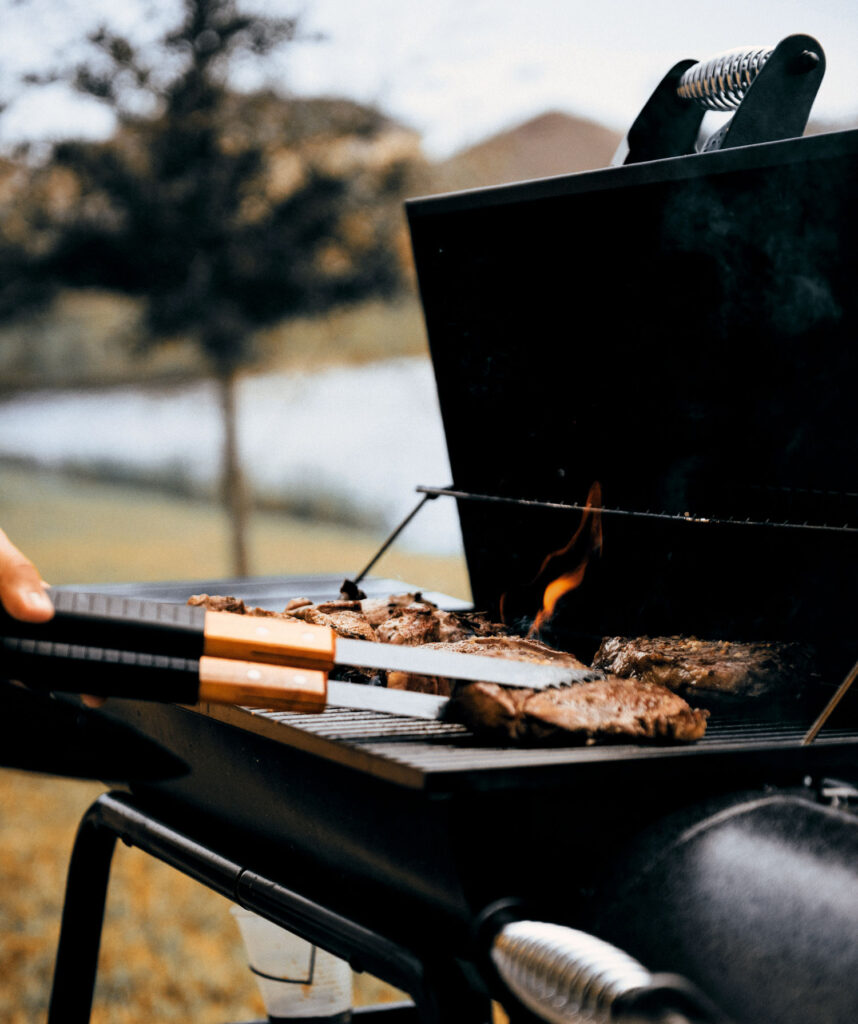The Science of Steak on the Grill

If you salivate at steak sizzling on the grill, blame it on chemistry: specifically a mouth-watering reaction of proteins and sugars. The Maillard reaction — pronounced “my-YARD,” like where you keep the grill — is responsible for those tantalizing aromas and flavors, as well as the distinctive grill marks.
“When you’re talking about a piece of steak or chicken, something that’s high protein, you have one of the key ingredients for Maillard,” says Gabriel Keith Harris, Alumni Distinguished Undergraduate Professor of Food Science with NC State University’s Department of Food, Bioprocessing and Nutrition Sciences.
”The thing that really makes a steak work in terms of Maillard is not just the protein, but the fact that it’s muscle, which contains glycogen, a form of stored energy that’s literally made of long chains of sugars.”
Sizzle: Surface Dehydration
A steak also contains moisture that needs to evaporate before Maillard can begin.
“That’s why when you drop a steak on the grill, you hear that sizzle,” Harris explains. “One of the first important steps to getting a Maillard reaction going is this surface dehydration, which is the beginning of how the outside of a steak becomes very different from the inside of a steak, especially if you’re a fan of rare steak like I am.”
Water holds down the temperature of the meat, so as it leaves, surface temperatures rise to around 350 degrees Fahrenheit and beyond. “That temperature’s really where Maillard happens quickly and efficiently,” Harris says, noting that it’s the default temperature for home ovens. “With a steak, what you’re trying to have happen is a relatively fast Maillard reaction.”

Browning: Splitting Proteins
Protein-rich steak contains chains of amino acids. Some of those chains have amine groups hanging off the side that make the Maillard reaction possible.
“Not every amino acid chain has this amine group hanging off of it, but enough of them do in most proteins that you can get a good browning reaction going,” Harris says. “Certainly in beef, plenty of amine groups are there, ready to go.”
The heat of the grill splits the sugar chains in glycogen into individual sugars. That’s when the magic happens. “Now you have these highly reactive amines on these proteins and you have sugars, and if the flame’s hot enough, you start splitting off amino acids from protein.”
The chemical reaction inside the meat produces the aroma, flavor and appearance of grilled steak. It’s named for Camille Maillard, a French physician and chemist who first described the reaction in 1912. (French speakers drop the “d” when pronouncing his name.)

Grill marks emerge as a steak or a chicken breast browns. Harris says the Maillard reaction is rapid at high temperatures.
“Grill marks can easily turn from a brownish appearance to kind of a black charcoal appearance because you’ve gone past Maillard,” he says. “Now you’re just demonstrating that this food is organic, it’s made of carbon. What’s happening is it completely breaks down on the hot surface.”
Baked, Fried and Roasted Foods
Maillard reactions are common in many kinds of foods exposed to dry heat or hot oil. They happen when you make toast, bake bread, fry foods or roast coffee beans, for example.
Harris has his freshmen food science students name their favorite foods. Almost always he can find a Maillard reaction. It happens with pizza crust and meat toppings, fried chicken, even the ice cream cone holding a favorite flavor of Howling Cow. Cacao beans used to make chocolate are roasted like coffee, another example.
The Maillard reaction produces a number of compounds, including acrylamide, which has been linked to cancer in animal studies, when given at very high doses. Harris says the risk from eating any food comes down to how long and how frequently you’re exposed to it, as well as how the food is prepared.
“As an occasional consumer of grilled food or fried food, it doesn’t worry me too much. As an everyday consumer of coffee and chocolate, I’m not too concerned because my acrylamide ‘dose’ is far less than what would be used for animal studies.”
You’re probably not an everyday steak eater, so it’s fine to fire up the grill to see if you can observe a Maillard reaction in progress. After all, it’s for science.
- Categories:


